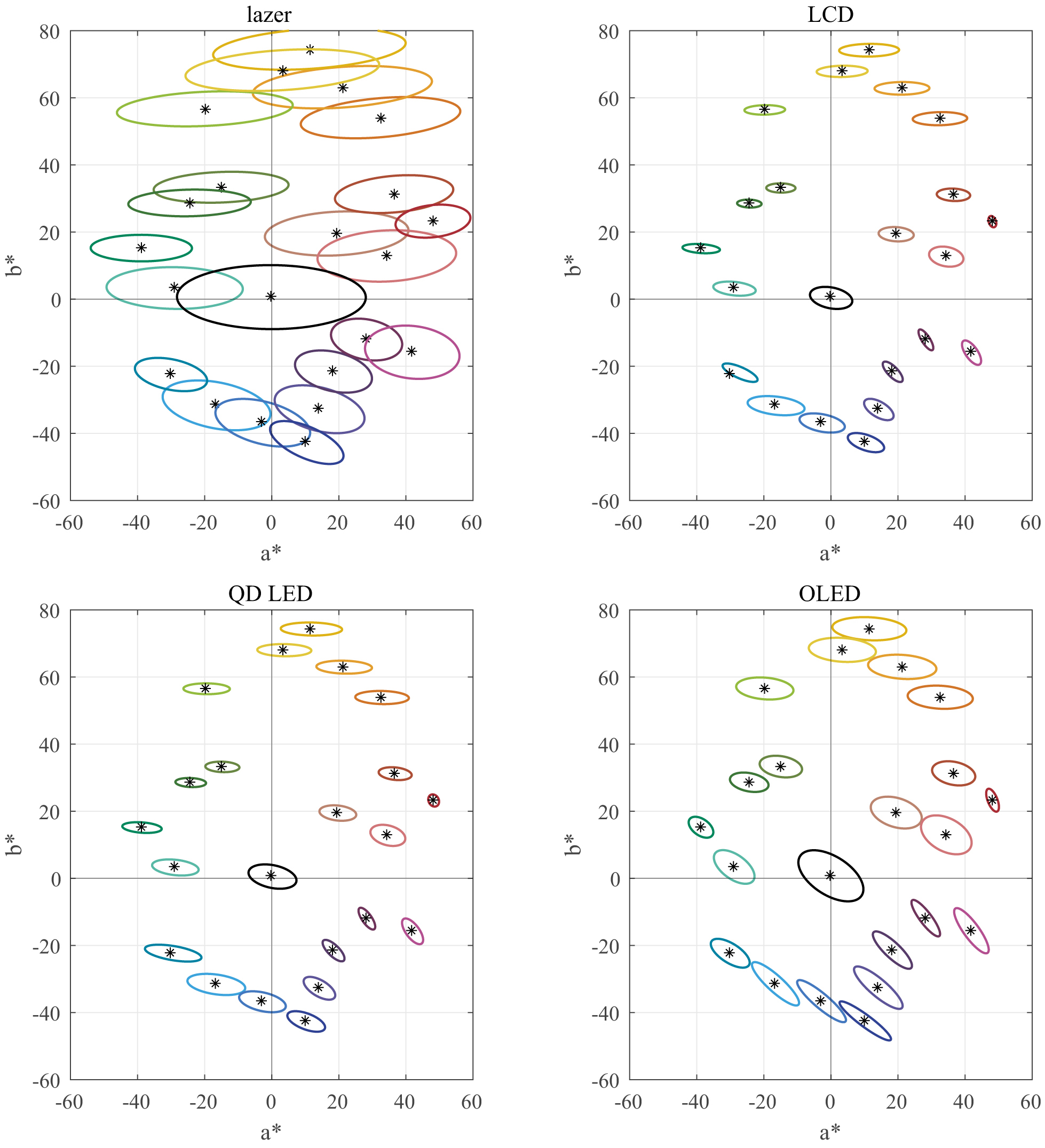
When two colors are presented under identical viewing conditions, they may appear the same to one observer but different to another, a phenomenon known as observer metamerism (OM). This effect is caused by individual differences in their color matching functions (CMFs). To achieve accurate color reproduction between displays, it is essential to minimize OM. This study first investigated OM between four displays in cross-media reproduction through computer simulations. Next, the relationship between metamerism in the displays and the RGB peak wavelengths was examined. The simulations were also used to explain the effects of individual variation on the orientation of OM ellipses in displays, from the perspective of human visual physiological parameters. The analytical approach developed in this study provides a valuable framework for predicting OM across different display technologies.

For a few years, the automotive industry has produced new cars with continuous changing display models, this by combining display sizes, forms, and technologies all together to bring new experiences to the users. In this paper we will present the color matching solution implemented for a new car display system where regular LCD display technology and LED lighting tiles are mixed together. The solution we proposed is based on accepted display model providing the transformation device RGB space to CIE XYZ independent color space and in reverse. The approach we followed choose the LCD display as reference, then transformation matrix is derived to modify the RGB LED control values. Once the color matching operation is applied, the color difference between the two display areas is greatly reduced.